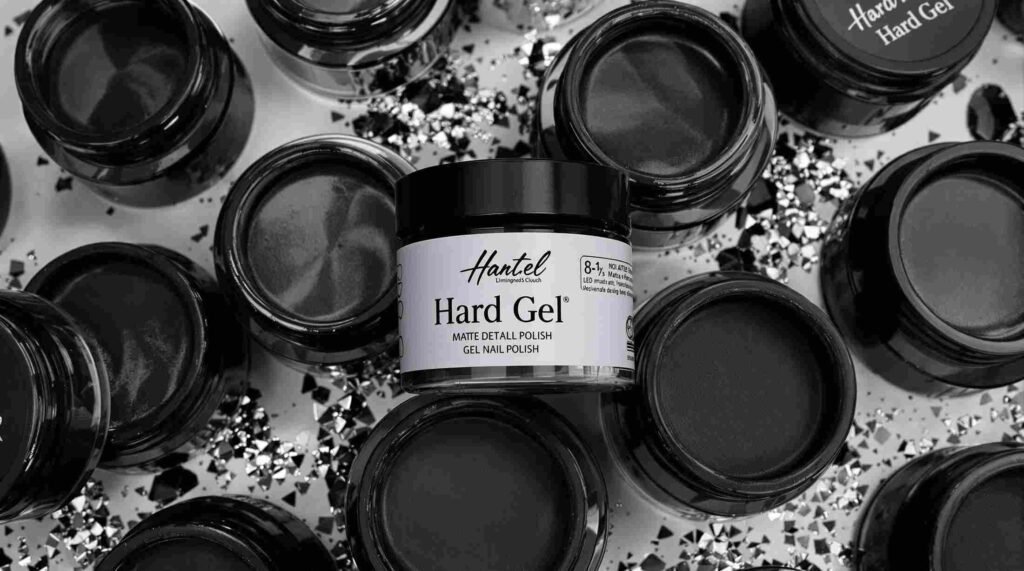In my early days as a nail tech, I remember scrolling through a Glitterbels catalog, amazed at their fabulous range of nail products. Their reputation as an authority in the world of nails comes not just from their beautiful offerings, but also from their focus on professional training. That’s where many seasoned and starting techs like me truly begin to elevate their skills.
As someone always keeping an eye on market trends and the ever-changing fashion in nails, I’ve learned that staying on top of your game is all about having the best tools, deep knowledge, and understanding your clients’ needs. This article is about exploring how hard gel truly stacks up against dip powder—two salon favorites that have carved their place in the nail scene.
If you’re a nail enthusiast or a pro making a switch, knowing the differences, advantages, and limitations of these two methods is the best choice you can make for your business and personal lifestyle. Hard gel is known for its durability, strength, and a super sleek polished finish, but the application process requires more control and experience.
On the other hand, dip powder offers quicker results and more flexibility, which is great for long-lasting manicures without needing UV light. The distinctions in method make each suitable for different nail goals—whether you’re chasing strength or ease. Trust me, once you get hands-on with both, the decision becomes a lot clearer.
Choosing Between Hard Gel and Dip Powder – The Answer
For appearance, both give a glossy, salon-quality finish, but hard gel allows intricate shaping and is often preferred for sculpted extensions. Removal differs: hard gel must be filed before soaking and may need professional removal to prevent damaging the nail bed, while dip powder is soaked with acetone, though it takes longer to break down. On maintenance, dip powder tends to hold up better against everyday wear and tear, but hard gel needs more careful maintenance to preserve its flexibility and shine.
What Are Hard Gel Nails?
While exploring the differences between hard gel and dip powder, it’s clear that nail technicians often choose hard gel for its strong nail enhancement properties. It begins as a viscous liquid that’s applied in layers, then cured using a UV lamp or LED lamp. Once exposed to light, it hardens into a solid, forming a protective overlay with a natural look and solid feel.
Ideal for those wanting to extend nail length, repair broken tips, or create a natural overlay, this thick, builder gel is both sculpt able and durable. Unlike soft gels or gel polish, it’s not soak-off and needs filing for removal, but it’s lightweight texture and high flexibility make up for the extra effort. I’ve seen it resist chipping and cracking for weeks, offering lasting durability that clients truly appreciate.

What is Dip Powder?
Compared to hard gel, dip powder offers a faster and simpler nail enhancement method that both professional nail techs and even non professionals can master. It starts by applying a base coat on the natural nail, then dipping it into acrylic powders or coloured powder, followed by sealing with an activator and bonding agent. This process skips UV light and monomer liquid, making it a low-odour, quicker alternative to traditional acrylics.
With its ease of application, dip nails are known for their chip-resistant finish, lasting up to four weeks without visible lifting. Clients often praised the strength, smooth manicure, and the wide range of color options. The system is accessible, requires less skill and equipment, yet gives a durable, lightweight, popular, thickness, and strong result that feels effortless.
Want to know what dip nails really cost? Don’t miss our breakdown on Dip Manicure Cost.

Pros & Cons of Hard Gel & Dip Powder
Pros of Hard Gel:
- Offers a lightweight, natural feel that many clients prefer for everyday comfort.
- Known to be highly durable, resistant to chipping, and holds up well over time.
- Ideal for nail extensions and strong overlays that maintain their shape.
- Provides great flexibility, helping to avoid cracking even under pressure.
- Delivers a high-gloss finish with long-lasting shine, perfect for a polished look.
- Allows for customised designs and finishes to match any style or trend.
- Feels more breathable on the nails than traditional acrylics, which many clients love.
Cons of Hard Gel:
- Requires UV or LED light for proper curing, which adds a step to the process.
- The application needs skill—professional experience and precision are essential.
- Unlike dip powder, it can’t be soaked off and must be filled carefully.
- The application process is more time-consuming and must be done correctly to avoid damage.
- Generally takes longer time to apply and remove compared to quicker systems like dip.
Pros of Dip Powder:
- Does not require UV or LED light curing, making it quicker and more convenient.
- Offers a faster application process compared to hard gel.
- Delivers a long-lasting, chip-resistant finish that clients love.
- Comes in a variety of colours, from soft to ultra-pigmented tones.
- Provides an even colour appearance across all nails.
- Releases less odour than traditional acrylic systems, improving comfort in the salon.
- Great for beginners—doesn’t require extensive sculpting skills.
Cons of Dip Powder:
- Can appear thick and bulky if not applied correctly.
- Needs precise application to avoid cross-contamination between powder jars.
- Not suitable for extensions, works better for overlays only.
- Some clients may experience allergic reactions due to ingredients in the bonding agents.
- Requires sealing with an activator, which can cause inconsistencies if not done properly.
Making the Right Choice for Your Nails
As a nail technician, I often guide clients through the decision between hard gel and dip powder based on their nail health, lifestyle, and personal preferences. If you want strong nails with a quick application and no UV exposure, dip powder is a great alternative. It offers a no-cure method with minimal upkeep, making it beginner-friendly and ideal for those who want long-lasting color and simple care.
On the other hand, hard gel is more versatile, great for those looking to extend their nails with a more customizable shape and feel, especially for naturally weak nails that need flexibility instead of stiffness.
Both methods can deliver beautiful results when applied correctly and maintained with care. While dip powder works well for quick overlays, hard gel allows for sculpting precise, natural-looking extensions with a seamless finish and added durability. Your daily habits and individual preferences matter here, and the right solution depends on what fits your routine best.
Many professionals and nail techs build their expertise by mastering both techniques—broadening their skill sets to serve a wider client base with personalized services tailored to each client’s needs. Understanding the strengths and weaknesses of both options will help you make the best choice—a key difference often highlighted in expert guides on nail enhancement techniques.
FAQ’S
Which is healthier, dip or gel nails?
In my experience, gel polish is often healthier for the natural nail because it causes less damage during application and removal, requiring minimal filing. It’s also more flexible, which helps prevent chipping and breaking. On the other hand, dip powder can feel stronger but may be harsher on the nails due to heavier prep work. If maintaining flexibility and nail strength is your goal, gel tends to be the safer choice.
Is gel builder better than dip powder?
In my experience, while dip powder has its strengths—especially for creating tough, long-lasting nails—Builder Gel really shines when you want more versatility and durability. The HEMA Free formula offers easy application and is perfect for crafting unique nail designs that truly stand out, giving nail techs more creative freedom with every set.
What looks more natural, gel or dip?
If you’re after a natural and polished look, most clients I work with prefer gel nails because of their smooth high-gloss finish that blends beautifully with real nails. While dipping powder is known for its strength and feels more like acrylic nails, making it a robust and resilient option for strong nail enhancements, gel tends to look softer and more refined.
What are the negatives of dip powder nails?
While dip powder nails are known for their durability, that strength can come at a price. Experts like King and Kandalec point out that they can be very difficult to remove, and if not done properly, the process can seriously damage your nail beds. I’ve seen this happen often when removal is rushed or done without care, which is why it’s important to follow safe steps or get help from a professional.
Does builder gel damage nails?
Some people are often worried that builder gel might damage their nails, especially since it’s a strong product made for strengthening the natural nail. The truth is, it can be damaging only if not applied correctly, which is why it’s essential for nail techs to stay trained and keep their nail knowledge up-to-date to ensure safe and healthy results.

